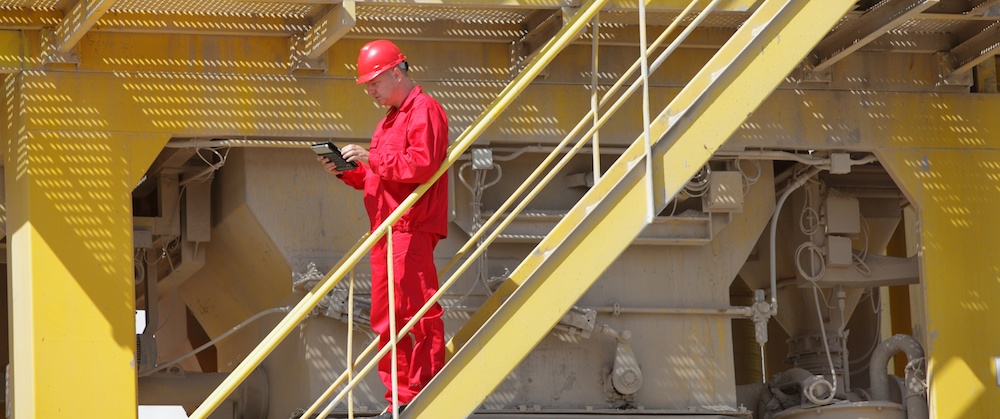08 Nov How Field Service Apps Increase Cash Flow, Reduce Risk

Editor’s Note: This post was updated March 28, 2018
For many field service organizations, the “field” is an extreme environment that presents some daunting challenges. The playing field for these companies is not a corporate data center, satellite sales office, or a customer’s residence. No, for many businesses, the field can be desolate, immensely vast, and often treacherous. Oceans, mountaintops, deserts, and even outer space are where many field services management businesses must operate. Satellites, oil drilling rigs, inter-continental gas pipelines, network towers, and windmills are the equipment that their field technicians must service and inspect.
An unexpected wind squall while servicing an oil rig in the middle of the Atlantic or a pop-up lightning storm while atop a cell tower are life or death situations for a field tech. As such, the field techs that travel to these extreme locations are highly trained and must be mentally and physically prepared for the tasks at hand. They must be equipped for the most rugged environments and unexpected weather conditions. Safety is paramount as is getting the job done right the first time. If the right parts and necessary equipment are not available, the financial burdens increase dramatically along with the risk to the field tech.
It is imperative that these extreme field service technicians are using the most efficient field service apps. Field engineers must have access to all of the data they need, including work orders, routing information, necessary parts, available inventory, and more. The mobile apps they are using must be persona based and process driven. All of the person’s tasks, habits, patterns, and workflows must be incorporated to create an empowering user experience. Field service apps help the organization ensure that best-practice business processes are followed to ensure compliance and eliminate risk.
To enable a process-driven mobile workflow, field service management apps must utilize the latest technologies, including:
- Powerful cameras that allow field techs to scan barcodes on equipment or to capture images of repaired equipment and completed work.
- Offline capabilities for remote locations with little or no network access.
- Voice recognition to allow field techs to capture notes, hands-free.
- GPS and geo-location to allow techs to easily navigate to the next job as well as allowing the service desk to keep track of a tech’s location for safety and accountability purposes.
- Push notifications so field techs to receive alerts and warnings in real-time for increased safety.
Many Mobile Reach customers are in the business of extreme field service management. Gogo provides Wi-Fi service for major airlines. Network towers, which are in both remote and urban locations, must be serviced and inspected on a regular basis. To keep field techs safe, each has a special app on their phone that tracks their locations on a map for the dispatch team. When there is dangerous weather approaching the area, the back-office can send the tech a push notification warning them to return to the ground as quickly as possible.
Applus RTD, another Mobile Reach customer, inspects and services pipelines, offshore production facilities, and refinery and storage facilities in oil and gas. The mobile inspection process can be challenging, and network connectivity is often limited or not available at all. Therefore, field service apps that work offline is critical. It is also imperative that all techs are equipped with process-driven mobile apps that allow them to mark off each task with a push of a button on their phones. Work started and work completed is time- and location-stamped. Work orders can be completed on the spot, updating the back-end enterprise application in real-time, including costs and billing, parts and inventory, and preventative maintenance.
This has dramatically improved the company’s regulatory compliance and billing process. Days sales outstanding is being reduced and financial penalties eliminated as service level agreements are no longer a challenge to meet.
To ensure that your organization’s field service management operations are efficient, effective, and present less risk to your field techs, examine your mobile field workforce processes. Once each process is refined to its simplest form, design field mobile apps that match that your field techs’ workflows. Extreme field service management calls for extreme field service apps.
Learn more about field service apps via our comprehensive guide.



